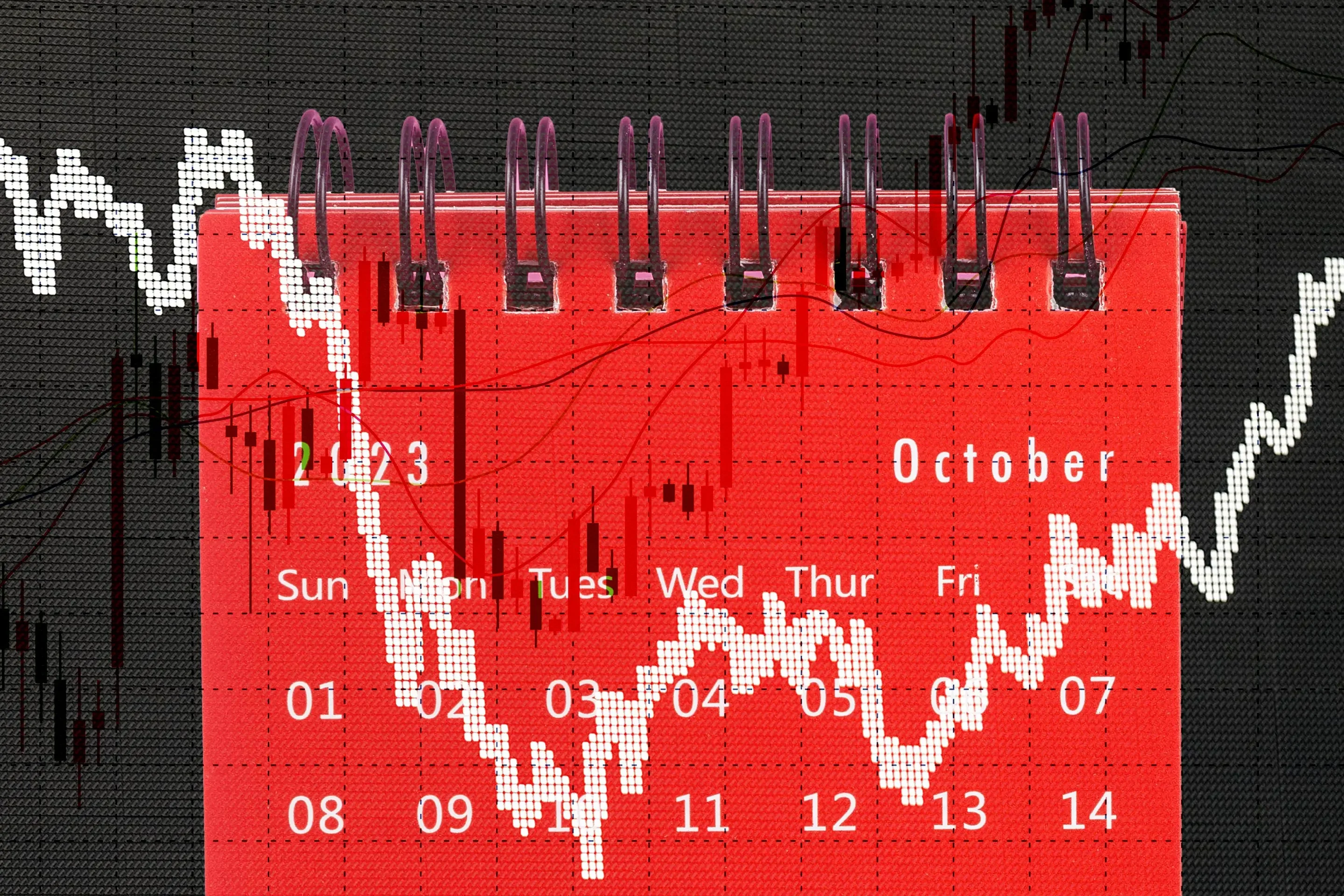Historical precedents and recent market volatility raise investor concerns about a potential October market crash. Current economic warning signs, including high valuations and interest rates, mirror conditions seen before past downturns, though experts caution against definitive predictions.

October 4, 2025

Source:
MarketWatch
Historical Precedent Fuels October Fears
October's reputation for market turmoil is again casting a shadow over Wall Street. Investor anxiety is heightened by historical data and recent volatility, although financial experts caution against treating a crash as a certainty.
The 'October Effect'
Some of the most infamous stock market crashes in history occurred in October, including the crashes of 1929, 1987, and the beginning of the 2008 financial crisis. This history has created a psychological phenomenon known as the "October effect," where investors become more cautious and markets more susceptible to sell-offs.
Echoes of the April 2025 Crash
Investors are still mindful of the sharp downturn earlier this year. The 2025 stock market crash began on April 2, after new U.S. tariffs were announced. The move triggered a massive global sell-off, erasing over $6.6 trillion from global markets in just two days.
The S&P 500, Nasdaq, and Dow Jones Industrial Average suffered historic drops before policy reversals and new trade agreements allowed a rebound to new highs by June.
September's Sell-Off
More recently, a strong September market was cut short after Federal Reserve Chair Jerome Powell commented on high valuations, sparking a sell-off that has continued into October. Concerns over AI spending and delayed tech earnings have further fueled market jitters.
Keep up with the story. Subscribe to the PR+ free daily newsletter

Source:
MarketWatch
Key Indicators Signal Potential Downturn
Several classic warning signs for a market correction are currently present in the U.S. economy, contributing to the cautious sentiment among investors.
Economic Warning Signs
Experts are closely watching a number of indicators that have historically preceded market downturns. These include:
Overvalued Markets: Price-to-earnings (P/E) ratios remain high, suggesting that stock prices are inflated relative to corporate earnings.
Rising Interest Rates: The Federal Reserve's policy of maintaining high interest rates to combat inflation makes borrowing more expensive and can slow economic growth.
High Debt Levels: Both corporate and consumer debt are at significant levels, increasing vulnerability to economic shocks.
Unsustainable Growth: Some economists argue that recent GDP growth is unsustainable, raising concerns about a potential slowdown.
Sector-Specific Weakness
The recent market downturn has been broad, with nearly all stock sectors closing lower last week. This indicates poor investor sentiment across the board.
However, the Utilities and Energy sectors have outperformed, showing relative strength amid the dip. Interestingly, energy is the only sector with a projected negative earnings forecast for 2025, which could make it a value play for some investors betting on a rebound.
Read More

Source:
Money
Share this news:




















